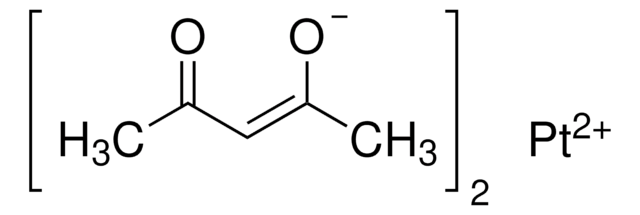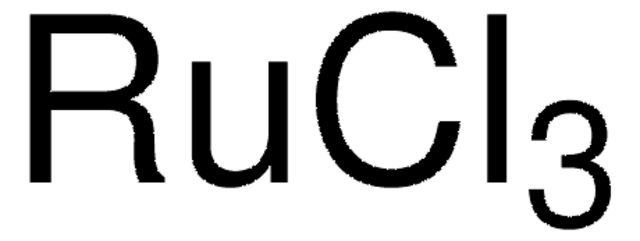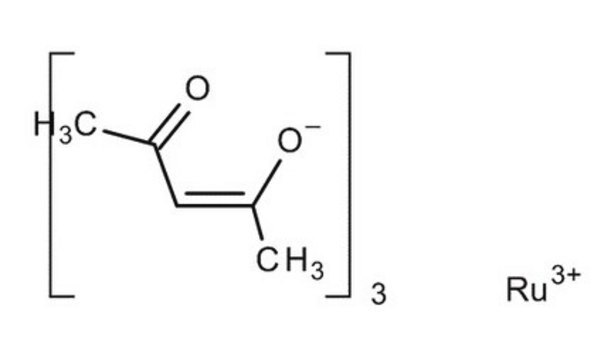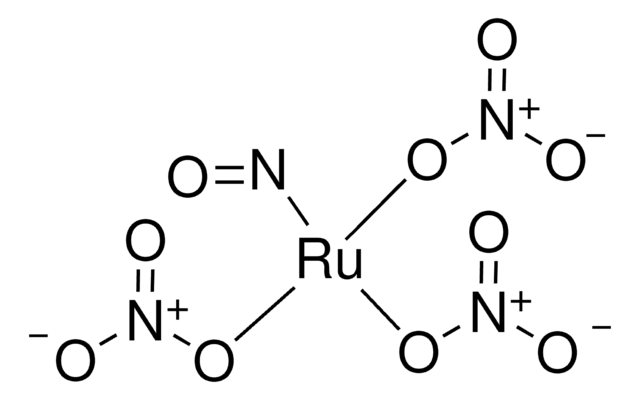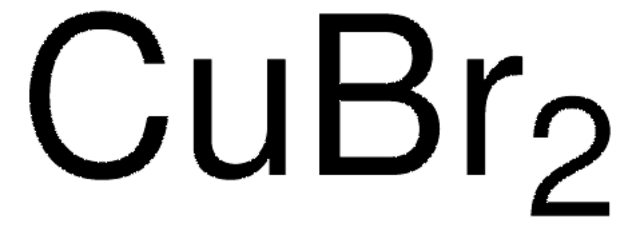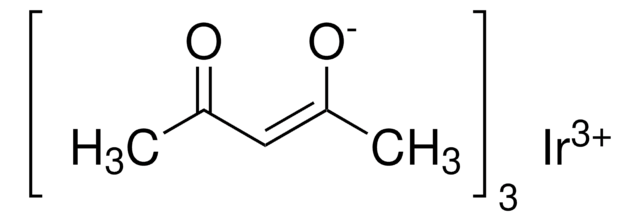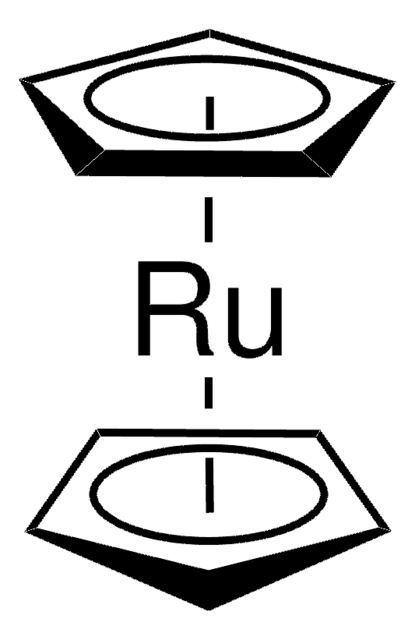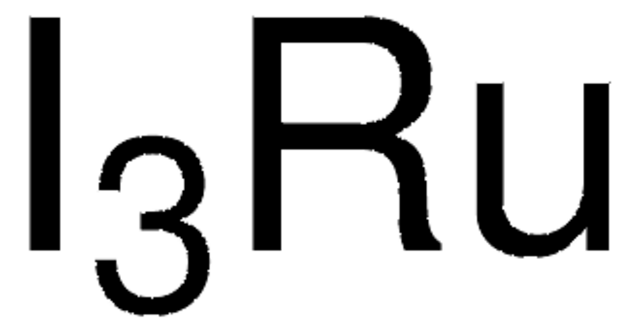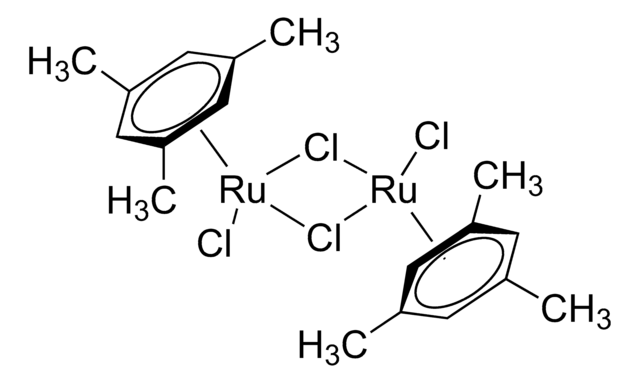282766
Ruthenium(III) acetylacetonate
97%
Synonym(s):
2,4-Pentanedione ruthenium(III) derivative, Ru(acac)3
About This Item
Recommended Products
Quality Level
assay
97%
form
solid
reaction suitability
core: ruthenium
reagent type: catalyst
mp
260 °C (dec.) (lit.)
SMILES string
CC(=O)\C=C(\C)O[Ru](O\C(C)=C/C(C)=O)O\C(C)=C/C(C)=O
InChI
1S/3C5H8O2.Ru/c3*1-4(6)3-5(2)7;/h3*3,6H,1-2H3;/q;;;+3/p-3/b3*4-3-;
InChI key
RTZYCRSRNSTRGC-LNTINUHCSA-K
Looking for similar products? Visit Product Comparison Guide
Application
Storage Class
11 - Combustible Solids
wgk_germany
WGK 3
flash_point_f
Not applicable
flash_point_c
Not applicable
ppe
dust mask type N95 (US), Eyeshields, Gloves
Certificates of Analysis (COA)
Search for Certificates of Analysis (COA) by entering the products Lot/Batch Number. Lot and Batch Numbers can be found on a product’s label following the words ‘Lot’ or ‘Batch’.
Already Own This Product?
Find documentation for the products that you have recently purchased in the Document Library.
Customers Also Viewed
Our team of scientists has experience in all areas of research including Life Science, Material Science, Chemical Synthesis, Chromatography, Analytical and many others.
Contact Technical Service


